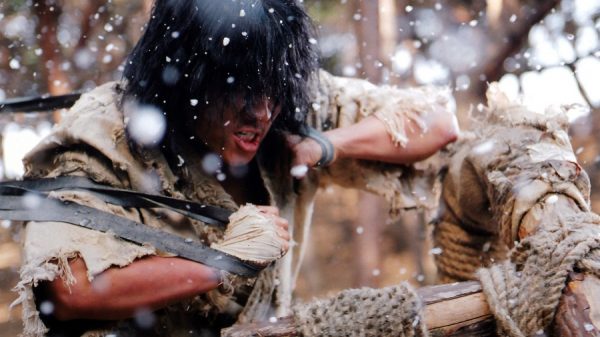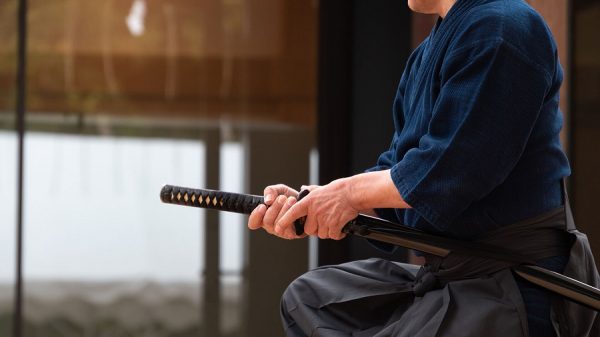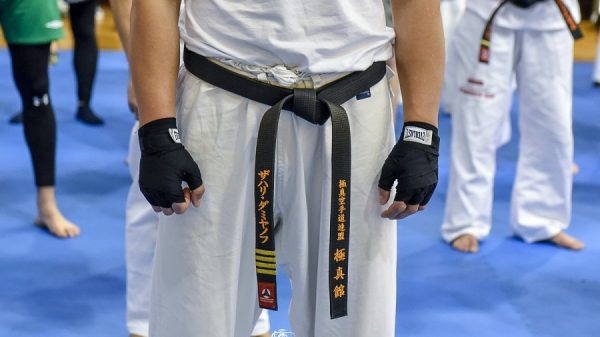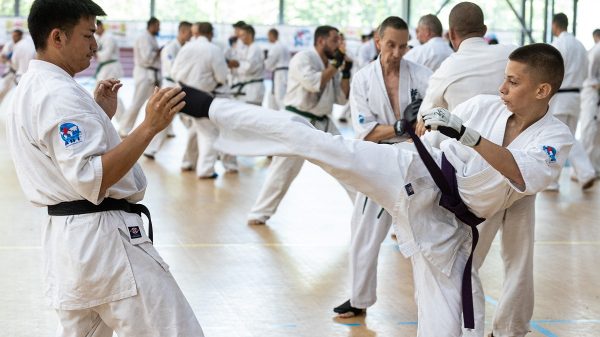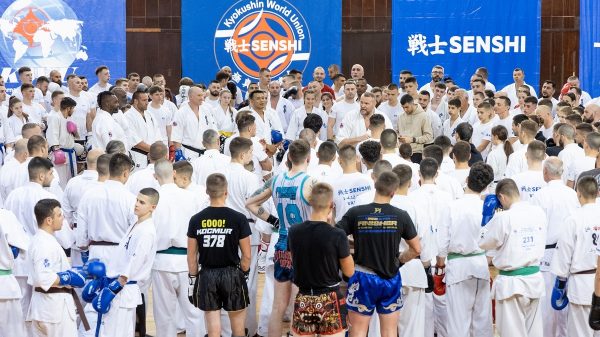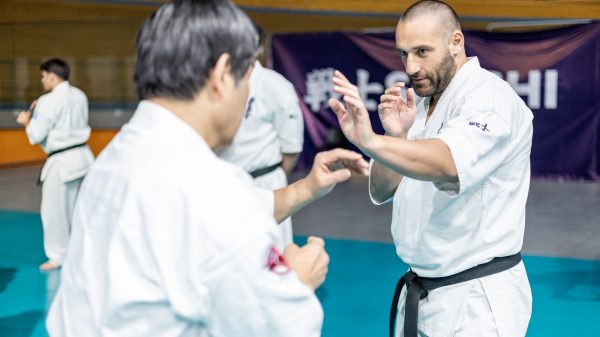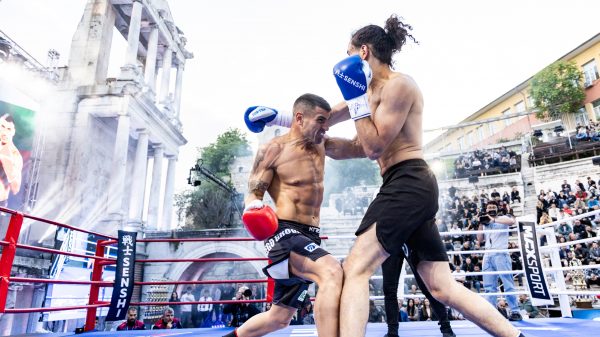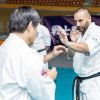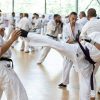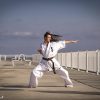These three simple ways will make you more flexible instantly!
Fighters need to have an optimal amount of flexibility to kick, punch, take down their opponent, and even escape submission holds. Your body has to be able to move through ranges of motion effectively, and that requires your muscles to stretch and contract functionally. In order to create flexibility, you have to wrap your mind around that it is more than just stretching a muscle.
Alignment and stability optimize flexibility. The joints must be in the correct position for muscles to stretch and contract properly. When joints are not aligned well, it compromises stability which limits and restricts mobility and flexibility, leading to dysfunctional movement. This also affects the contraction, range, and speed of your motion because your muscles lose pliability and resiliency.
For example, when the glute muscles are weak, the hip tilts forward. This causes the quads to tighten, resulting in a loss of flexibility to compensate for the weakness of the glutes. When the quads are tight, they will not stretch effectively because they are now stabilizing the hip instead of the glutes. So, the neuromuscular function for the quads must switch.
The solution is, to restore gluteal strength, in turn, restoring stability to the hip. When stability is restored, the quads will be pliable and resilient and have the ability to stretch and contract effectively again. Stability is essential to maximize flexibility.
Do these three things to create instant and dramatic flexibility and range of motion.
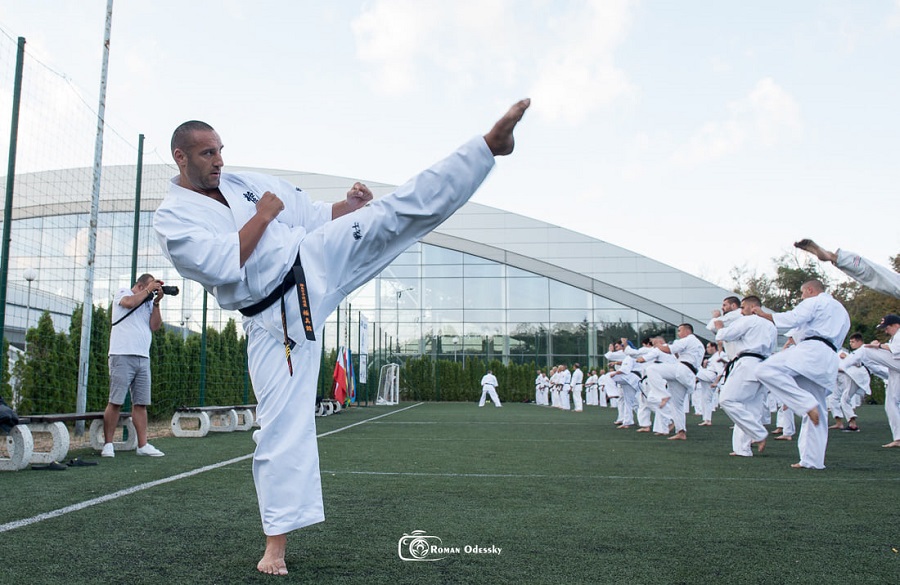
Contract then Stretch
By contracting the muscle that opposes the stretching muscle, it sends a relaxation signal to the muscle being stretched. For example, your glutes and quads, back and chest, or quads and hamstrings. It is called Reciprocal Inhibition.
- For example, when you lunge, contract the glutes first before you stretch the quads.
Hold the Stretch
By simply holding a stretch for 5-10 seconds, the muscle will relax further into the stretch. Your muscles know to the exact length how far and how fast they can stretch. It is called Autogenic Inhibition.
- For example, when you stretch, and the stretch stops, hold for about 5-10 seconds. The muscles will relax further, increasing the stretch.
Breathe
The inhale supports the contraction, and the exhale supports the relaxation, the stretch. When you inhale and exhale using the first 2, it increases flexibility more.
- For example, inhale as you stretch to the tension point of the stretch. Hold for 5-10 seconds, then exhale into the stretch further. You will feel the stretch open immediately.
Use all three things to optimize the movement pathway for flexibility and mobility. Muscles need to adapt, to adjust flexibility and range of motion.
Isolated Stretching vs. Resisted Stretching
Isolated Stretching
Just stretching a muscle will not produce flexibility. It pulls the muscle fibers apart.
Isolated stretching:
- Makes muscles lax, losing the ability to produce force and speed.
- Desensitizes muscle,s diminishing explosiveness.
- Loses resiliency.
- Produces inhibition- muscles cannot contract forcefully and fast.
Static stretching is not detrimental. The problem is the aforementioned when you do strength training or force production, because your muscles don’t respond effectively.
Static stretching will not injure you. However, to gain flexibility statically, you sacrifice power and force production.
Muscles absorb force when you add resistance to the stretch. Static stretching does not.
Resisted Stretching
Stretching with resistance allows muscles to maintain elasticity to create a more forceful rebound contraction. Without it, it’s like bouncing a basketball in the sand. Muscles need to be able to stiffen to be springy and explosive, like bouncing a basketball on the ground. You want muscles to be resilient and springy, having the ability to stretch and recoil fast with power.
- Research says regular heavy stretching with resistance for 10 minutes three days a week increases strength, speed, and power as well as enhances flexibility and mobility.
Other research says dynamic stretching through ranges of motion, where muscles contract and stretch, improves flexibility as well as promotes muscular stiffness.
Stretching before competition and training diminishes force production and relaxes muscles due to lengthening, diminishing springiness, and explosiveness. I always prefer doing slow, resisted stretching with weights or resistance bands because it maintains and enhances springiness, explosiveness, and flexibility, all at the same time.


